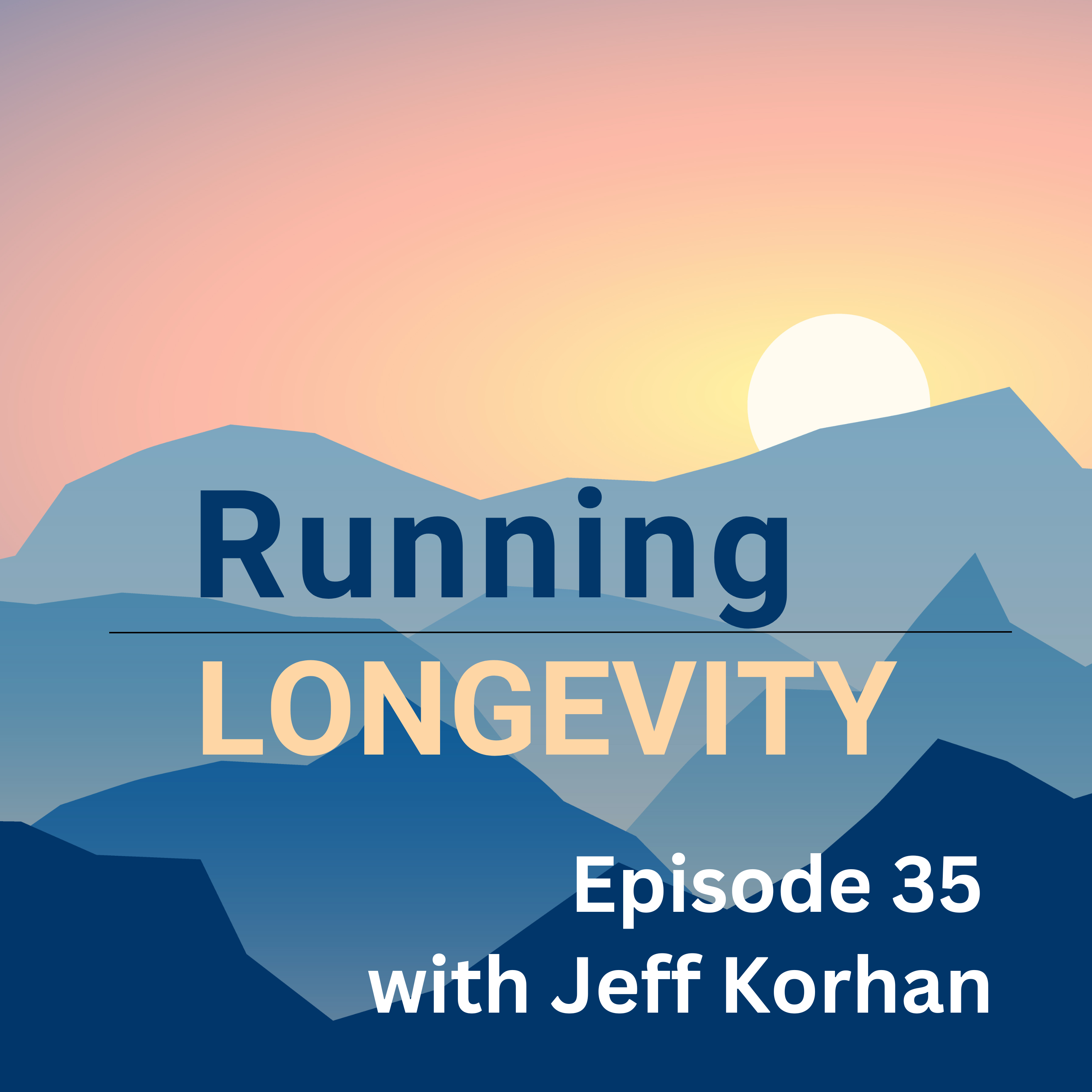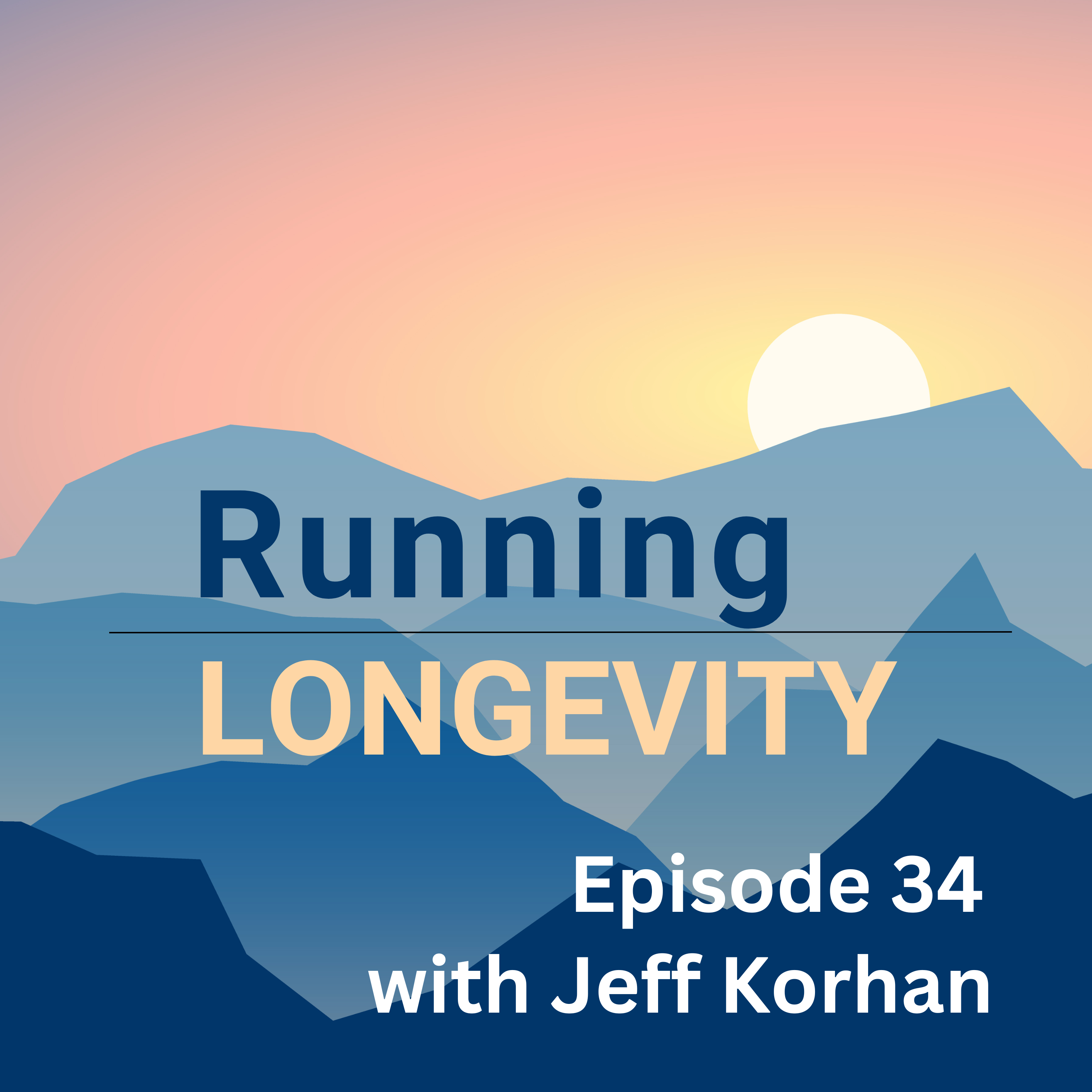Episodes
Joint Pain Relief Through Full Range Of Motion
This episode is for runners who have tried everything to free themselves from chronic joint pain, such as shin splints or arthritic pain. If that describes you, the solution may be a strength training technique known as end r...
How To Plan And Optimize Training And Recovery
This episode is for runners who want to optimize their training. Recovery is an essential aspect of training. A simple way to optimize it is to plan it with the same care you give to training. Training plans are a guide, and ...
Run Your Way: Get Started Running At Any Age
This episode is for runners who want to experience the joys and benefits of running. It’s your guide to starting strong, staying motivated, and discovering what running means to you—right now. If you're in your 30s, 40s, 50s,...
Protein Needs For Running And Longevity
In this episode, we will weigh in on the debate regarding how much protein is needed to support your lifestyle. I’ll also touch on the benefits of the readily available protein supplements. So, what's all the fuss about? It's...
How To Train The Small Muscles That Support Joints
In this episode, we discuss a topic that seldom gets the attention it deserves. I’m referring to the small muscles and ligaments that support healthy joint function. Unexpected pain when running makes us aware of these tissues. This is...
Heart Rate Variability: How To Use HRV To Optimize Training And Recov…
Heart Rate Variability can optimize training, race readiness, and overall well-being. A high HRV indicates greater heart rate responsiveness. It's the ability to quickly increase one’s heart rate for intense training sessions and bring it back down...
5 Steps To Optimize Your Training Plan
In this episode, we will address how to optimize your training to make it more intentional. Runners of all experience levels can fall into the trap of running junk miles. This happens when they don't have a running strategy or a plan. When you...
Improve Running Cadence For Efficiency and Power
When you run in icy conditions you are forced to use better running mechanics, because not doing so increases your chances of slipping and falling. When your weight is centered and balanced, you are more efficient and less prone to injuries. Watch...
Big City Marathon Guide: How To Safely Run Crowded Races
This episode offers five tips for safely and successfully running marathons and other races that – as we all know -- are becoming increasingly crowded. The energy of these larger races is what makes them so much fun, but when you consider their cost...
Backward Walking Benefits For Runners
If you are familiar with Blue Zones, you may already know backward walking has been an accepted practice in Asia for hundreds of years. It’s part of the culture throughout the region, but not so much outside of it. You may feel uncomfortable at...
Start Here: Mobility Is Your Path To Pain Relief
Pain and injuries are part of life for active people. The true goal is maximizing mobility. This is what prevents injuries and makes pain an infrequent visitor. There are two components to mobility: Flexibility and the strength to control it...
Peak Performance: Tapering Secrets for Race Day Success
Tapering is gradually reducing training volume while maintaining intensity in the final weeks before a race. This allows the body to recover from fatigue and stress while retaining fitness and sharpness for race day. Most experts agree on a taper...
Two Foods For Running Recovery And Longevity
Nutrition is a sensitive topic, and I respect that. We all have our beliefs, habits, and food preferences. My purpose is not to change your diet, but to help you make the best choices for your desired lifestyle as it relates to running and...
Rest and Recovery: A Runner’s Guide To Sleep
All your training works together to produce desired results. Runners respect this and do their homework on training plans, nutrition, and the nuances of running shoes, to name a few. Yet, when was the last time somebody asked you about your...
How To Plan And Run Your Personal Best
It’s important to set realistic running goals and follow a race strategy to achieve them. Strategy is often confused with planning. Strategy is determining in advance what must be true to achieve your goals. In addition to training, you may...
Specialized Recovery Tools For Older Runners
I have enjoyed the benefits of these tools for years, but have no affiliation with the companies that provide them. See below for links to the respective providers. The two handiest tools for traveling are the Naboso ball and the mini-roller....
Running Motivation: How To Maximize Your Fun And Potential
Legendary marathoner Eliud Kipchoge has this to say about a frequently asked question: Do you always feel motivated to run? “I struggle with motivation sometimes, but I always try to have a positive thought, that I will enjoy the run.” ...
How To Avoid Running Injuries and Say Goodbye To Pain - Part 3 of 3
Today we will address what to do after running to fix your pain points and put the brakes on what’s causing your injuries. If you missed parts 1 and 2, please check them out for context and continuity. They include practices that will help...
How To Avoid Running Injuries and Say Goodbye To Pain – Part 2 of 3
Everyone wants to run, but many resist the work it takes to run safely. As we age, we must be intentional about movement to keep our bodies in a state of readiness for activity. Warming Up Let’s start with warming up. In the previous episode, we...
How To Avoid Running Injuries and Say Goodbye To Pain – Part 1 of 3
Since recommitting to road running and racing at age 59, I’ve extensively researched and tested methods for avoiding pain and injuries. As the audience for Running Longevity Lab has grown, I’m often asked for my routine for avoiding injuries. You...
Two Road Racing Tactics For Saving Time and Energy
Our job as intelligent human beings is to run our best race by strategically planning it. In this episode you'll learn two tactics with the potential to shave, not seconds, but minutes off your half or full marathon times. And they are useful...
How To Bulletproof Your Knees For Running: The Knees Over Toes ATG Sp…
If you are beyond 50 years, it’s likely you’ve been taught to perform squats incorrectly. The standard was to never go deeper than legs parallel to the ground. Anything deeper than that was said to “ruin your knees.” Stopping knee flexion at...
Reverse Sled Pulls And Backward Walking: What Runners Need To Know
Runners of all ages struggle with committing to strength training. Yet, the time comes when the regular reminders they get from sore ankles, knees, and lower backs pushes them to it. If I could only do one strength exercise, it would be reverse sled...
Running In Heat And Humidity – Tips For Adapting And Staying Cool
It’s that time of the year when more of us are likely to encounter hot and humid conditions. My feeling is you should not completely avoid these conditions, because you may encounter them again at an important race. Thus, it’s helpful to learn how...























